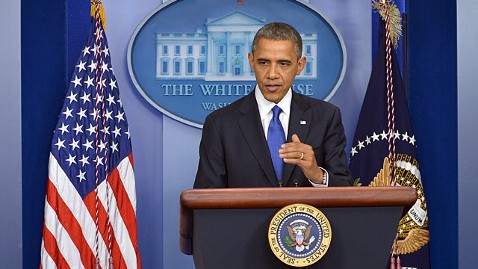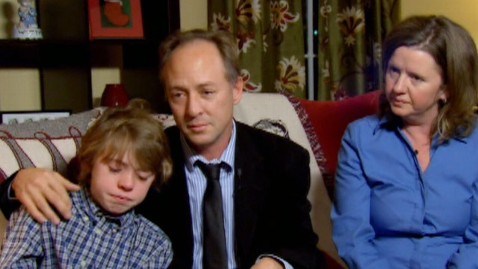A hundred years ago, two teams of explorers set out to be the first people ever to reach the South Pole. The race between Roald Amundsen of Norway and Robert Falcon Scott of Britain became the stuff of triumph, tragedy, and legend. (See rare pictures of Scott's expedition.)
Today, another Antarctic drama is underway that has a similar daring and intensity—but very different stakes.
Three unprecedented, major expeditions are underway to drill deep through the ice covering the continent and, researchers hope, penetrate three subglacial lakes not even known to exist until recently.
The three players—Russia, Britain, and the United States—are all on the ice now and are in varying stages of their preparations. The first drilling was attempted last week by the British team at Lake Ellsworth, but mechanical problems soon cropped up in the unforgiving Antarctic cold, putting a temporary hold on their work.
The key scientific goal of the missions: to discover and identify living organisms in Antarctica's dark, pristine, and hidden recesses. (See "Antarctica May Contain 'Oasis of Life.'")
Scientists believe the lakes may well be home to the kind of "extreme" life that could eke out an existence on other planets or moons of our solar system, so finding them on Earth could help significantly in the search for life elsewhere.

Lakes and rivers are buried beneath Antarctica's thick ice (enlarge).
Illustration courtesy Zina Deretsky, NSF
While astrobiology—the search for life beyond Earth—is a prime mover in the push into subglacial lakes, so too is the need to better understand the ice sheet that covers the vast continent and holds much of the world's water. If the ice sheet begins to melt due to global warming, the consequences—such as global sea level rise—could be catastrophic.
"We are the new wave of Antarctic explorers, pioneers if you will," said Montana State University's John Priscu, chief scientist of the U.S. drilling effort this season and a longtime Antarctic scientist.
"After years of planning, projects are coming together all at once," he said.
"What we find this year and next will set the stage for Antarctic science for the next generation and more—just like with the explorers a century ago."
All Eyes on the Brits
All three research teams are at work now, but the drama is currently focused on Lake Ellsworth, buried 2 miles (3.2 kilometers) below the West Antarctic ice sheet.
A 12-person British team is using a sophisticated technique that involves drilling down using water melted from the ice, which is then heated to 190 degrees Fahrenheit (88 degrees Celsius).
The first drilling attempt began on December 12, but was stopped at almost 200 feet (61 meters) because of technical problems with the sensors on the drill nozzle.
Drilling resumed on Saturday but then was delayed when both boilers malfunctioned, requiring the team to wait for spare parts. The situation is frustrating but normal due to the harsh climate, British Antarctic team leader Martin Siegert, who helped discover Lake Ellsworth in 2004, said in an email from the site.
After completing their drilling, the team will have about 24 hours to collect their samples before the hole freezes back up in the often below-zero cold. If all goes well, they could have lake water and mud samples as early as this week.
"Our expectation is that microbes will be found in the lake water and upper sediment," Siegert said. "We would be highly surprised if this were not the case."
The British team lives in tents and makeshift shelters, and endures constant wind as well as frigid temperatures. (Take an Antarctic quiz.)
"Right now we are working round the clock in a cold, demanding and extreme location-it's testing our own personal endurance, but it's worth it," Siegert said.
U.S. First to Find Life?
The U.S. team is drilling into Lake Whillans, a much shallower body about 700 miles inland (1,120 kilometers) in the region that drains into the Ross Sea.
The lake, which is part of a broader water system under the ice, may well have the greatest chances of supporting microbial life, experts say. Hot-water drilling begins there in January.
Among the challenges: Lake Whillans lies under an ice stream, which is similar to a glacier but is underground and surrounded by ice on all sides. It moves slowly but constantly, and that complicates efforts to drill into the deepest—and most scientifically interesting—part of the lake.
Montana State's Priscu—currently back in the U.S. for medical reasons—said his team will bring a full lab to the Lake Whillans drilling site to study samples as they come up: something the Russians don't have the interest or capacity in doing and that the British will be trying in a more limited way. (Also see "Pictures: 'Extreme' Antarctic Science Revealed.")
So while the U.S. team may be the last of the three to penetrate their lake, they could be the first to announce the discovery of life in deep subglacial lakes.
"We should have a good idea of the abundance and type of life in the lake and sediments before we leave the site," said Priscu, who plans to return to Antarctica in early January if doctors allow.
"And we want to know as much as possible about how they make a living down there without energy from the sun and without nutrients most life-forms need."
All subglacial lakes are kept liquid by heat generated from the pressure of the heavy load of ice above them, and also from heat emanating from deeper in the Earth's crust.
In addition, the movement of glaciers and "ice streams" produces heat from friction, which at least temporarily results in a wet layer at the very bottom of the ice.
The Lake Whillans drilling is part of the larger Whillans Ice Stream Subglacial Access Research Drilling (WISSARD) project, first funded in 2009 by the U.S. National Science Foundation with funds from the American Recovery and Reinvestment Act.
That much larger effort will also study the ice streams that feed and leave the lake to learn more about another aspect of Antarctic dynamism: The recently discovered web of more than 360 lakes and untold streams and rivers—some nearing the size of the Amazon Basin—below the ice. (See "Chain of Cascading Lakes Discovered Under Antarctica.")
Helen Fricker, a member of the WISSARD team and a glaciologist at University of California, San Diego, said that scientists didn't begin to understand the vastness of Antarctica's subglacial water world until after the turn of the century.
That hidden, subterranean realm has "incredibly interesting and probably never classified biology," Fricker said.
"But it can also give us important answers about the climate history of the Earth, and clues about the future, too, as the climate changes."
Russia Returning to Successful Site
While both the U.S. and British teams have websites to keep people up to date on their work, the Russians do not, and have been generally quiet about their plans for this year.
The Russians have a team at Lake Vostok, the largest and deepest subglacial lake in Antarctica at more than 2.5 miles (4 kilometers) below the icy surface of the East Antarctic plateau.
The Vostok drilling began in the 1950s, well before anyone knew there was an enormous lake beneath the ice. The Russians finally and briefly pierced the lake early this year, before having to leave because of the cold. That breakthrough was portrayed at the time as a major national accomplishment.
According to Irina Alexhina, a Russian scientist with the Vostok team who was visiting the U.S. McMurdo Station last week, the Russian plan for this season focuses on extracting the ice core that rose in February when Vostok was breached. She said the team arrived this month and can stay through early February.
Preliminary results from the February breach report no signs of life on the drill bit that entered the water, but some evidence of life in small samples of the "accretion ice," which is frozen to the bottom of the lake, said Lake Vostok expert Sergey Bulat, of the Petersburg Nuclear Physics Institute, in May.
Both results are considered tentative because of the size of the sample and how they were retrieved. In addition, sampling water from the very top of Lake Vostok is far less likely to find organisms than farther down or in the bottom sediment, scientists say.
"It's like taking a scoop of water from the top of Lake Ontario and making conclusions about the lake based on that," said Priscu, who has worked with the Russians at Vostok.
He said he hopes to one day be part of a fully international team that will bring the most advanced drilling and sample collecting technology to Vostok.
Extreme Antarctic Microbes Found
Some results have already revealed life under the ice. A November study in the journal Proceedings of the National Academy of Sciences reported that subglacial Lake Vida—which is smaller and closer to the surface than other subglacial lakes—does indeed support a menagerie of strange and often unknown bacteria.
The microbes survive in water six times saltier than the oceans, with no oxygen, and with the highest level of nitrous oxide ever found in water on Earth, said study co-author Chris McKay, an astrobiologist at NASA's Ames Research Center.
"What Antarctica is telling us is that organisms can eke out a living in the most extreme of environments," said McKay, an expert in the search for life beyond Earth.
McKay called Lake Vida the closest analog found so far to the two ice and water moons in the solar system deemed most likely to support extraterrestrial life—Jupiter's Europa and Saturn's Enceladus.
But that "closest analog" designation may soon change. Life-forms found in Vostok, Ellsworth, or Whillans would all be living at a much greater depth than at Lake Vida—meaning that they'd have to contend with more pressure, more limited nutrients, and a source of energy entirely unrelated to the sun.
"Unique Moment in Antarctica"
The prospect of finding microscopic life in these extreme conditions may not seem to be such a big deal for understanding our planet—or the possibility of life on others. (See Antarctic pictures by National Geographic readers.)
But scientists point out that only bacteria and other microbes were present on Earth for 3 billion of the roughly 3.8 billion years that life has existed here. Our planet, however, had conditions that allowed those microbes to eventually evolve into more complex life and eventually into everything biological around us.
While other moons and planets in our solar system do not appear capable of supporting evolution, scientists say they may support—or have once supported—primitive microbial life.
And drilling into Antarctica's deep lakes could provide clues about where extraterrestrial microbes might live, and how they might be identified.
In addition, Priscu said there are scores of additional Antarctic targets to study to learn about extreme life, climate change, how glaciers move, and the dynamics of subterranean rivers and lakes.
"We actually know more about the surface of Mars than about these subglacial systems of Antarctica," he said. "That's why this work involves such important and most likely transformative science."
Mahlon "Chuck" Kennicutt, the just-retired president of the Scientific Committee on Antarctic Research, an international coordinating group, called this year "a unique moment in Antarctica."
"There's a growing understanding of the continent as a living, dynamic place—not a locked-in ice desert—and that has created real scientific excitement."













